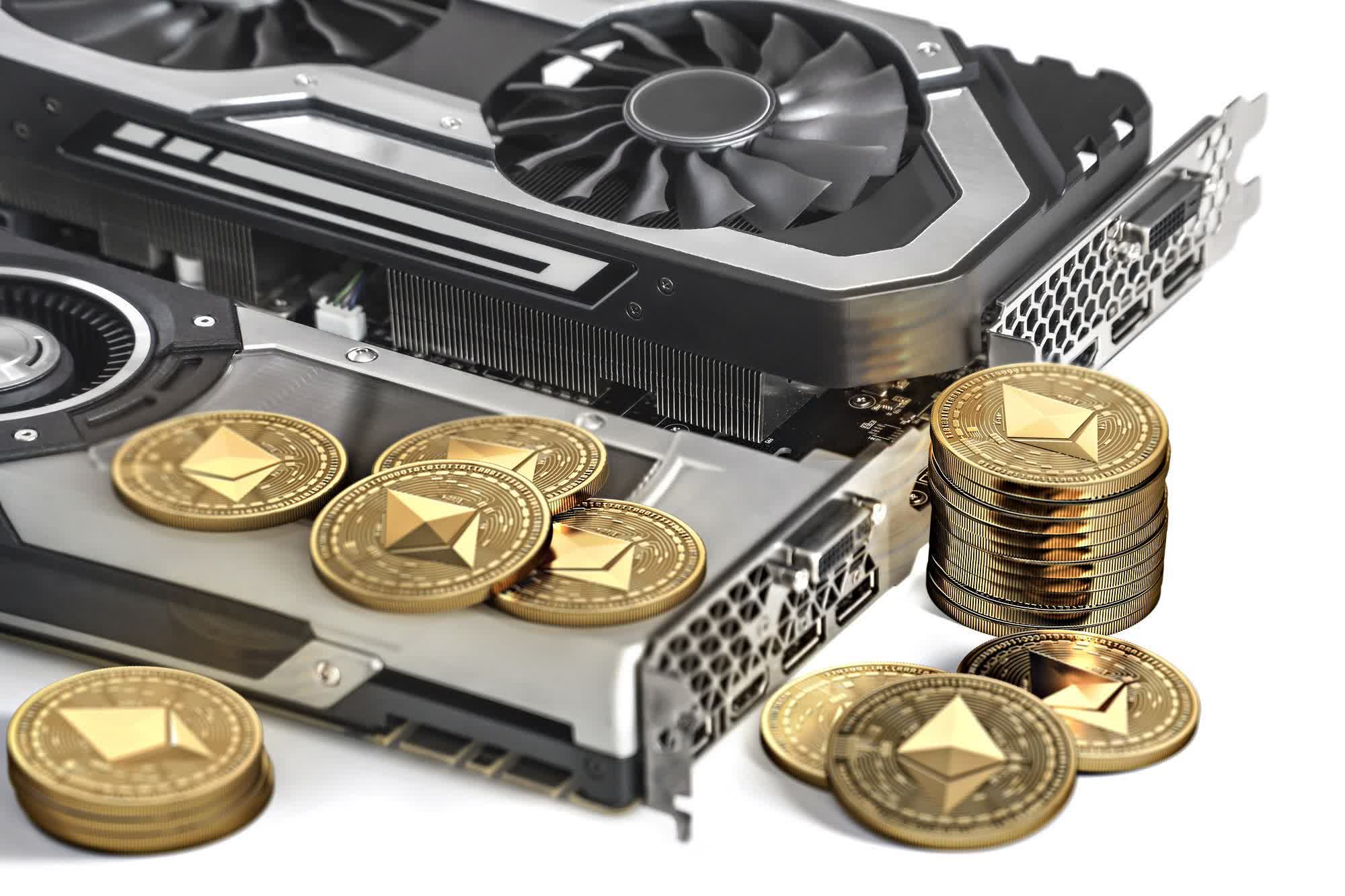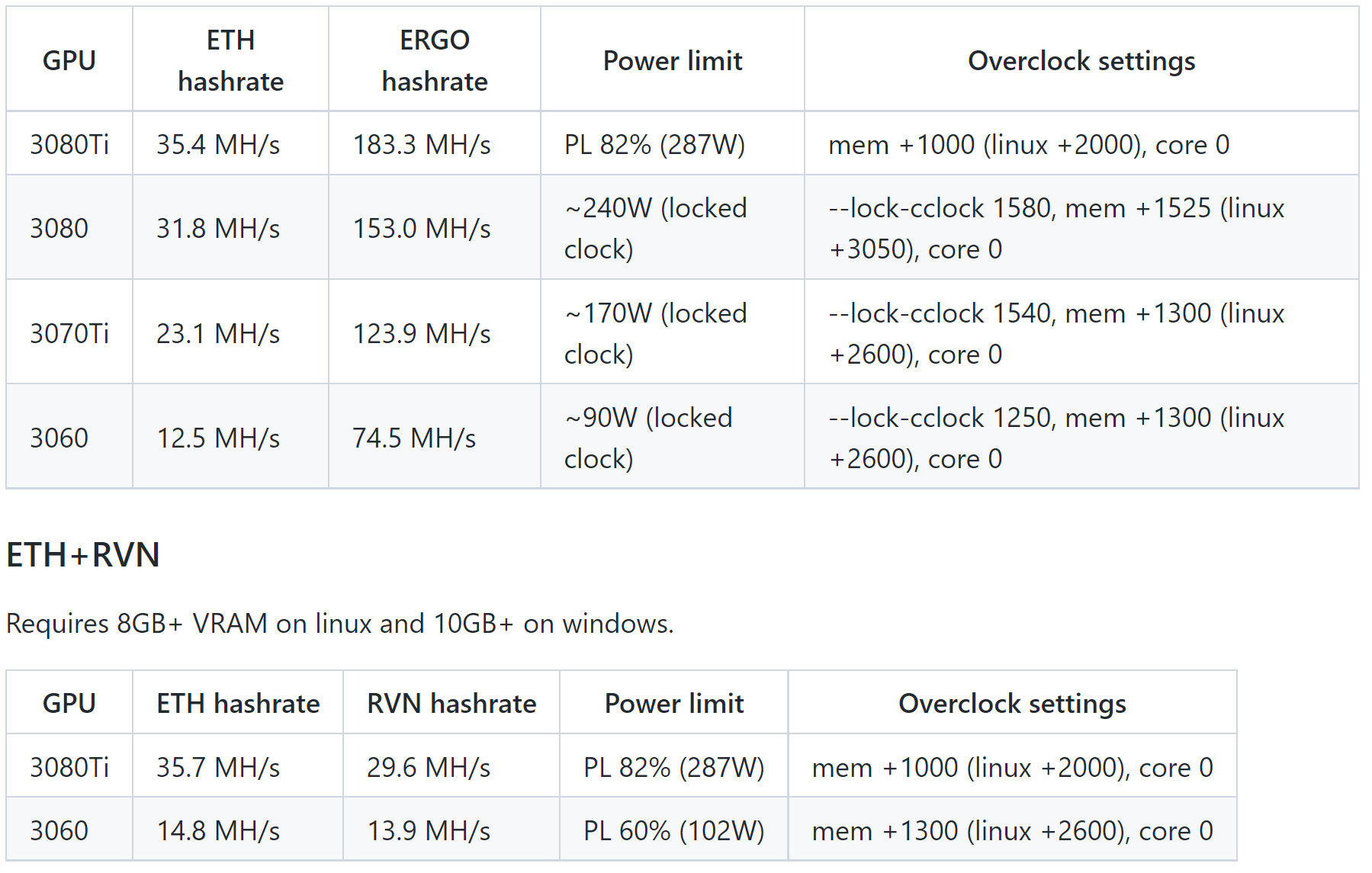In brief: Remember when mining software NBMiner managed to unlock 70% of the Ethereum mining performance of Nvidia's Lite Hash Rate (LHR) series? Another piece of software has managed a similar trick, but this one could be more appreciated by crypto fans as it can mine two different coins simultaneously using a 70/30 power split, thereby utilizing a card's full mining performance.
Back in August, it was reported that NBMiner was able to access 70% of the Nvidia LHR cards' maximum unlocked Ethereum hashrate, though the devs recommend setting it to 68% for the best stability. It was estimated that the tool could give the RTX 3060 Ti LHR a hashrate of up to 41 MH/s, putting it around the same level as the Radeon RX5600 XT or GeForce RTX 2070.
Now, Tom's Hardware reports that another piece of software goes even further by unlocking an LHR card's full mining performance, but there are significant caveats.
By enabling T-Rex's new dual mining option, users can set up to 30% of an LHR card's performance toward mining Ethereum, while the remaining 70% can go to another crypto such as Ravencoin. It seems that the split doesn't work the other way around: you can't dedicate more than 30% toward ETH mining, despite it being the more popular coin.
It's also noted that the type of Ampere card you own will be a major factor. Mining both Ethereum and Ergo requires 8GB of VRAM, and on an overclocked RTX 3080 Ti, you should get a 35.4 MH/s rate for the former and 183.3 MH/s rate for the latter. The dev also states that the hashrates will fluctuate wildly in dual mining mode. But pairing ETH with Ravencoin or Cornflux requires over 10GB of VRAM, more than what's in the GeForce RTX 3060 Ti and GeForce RTX 3070.
There is good news for gamers worried about how this might increase the pressure on a GPU market already suffering high prices and availability issues: Ethereum's move from a proof-of-work (PoW) model to proof-of-stake (PoS) should take place in 2021 or early next year. It aims to reduce power usage by up 99.95% and cut the requirement for GPUs.

